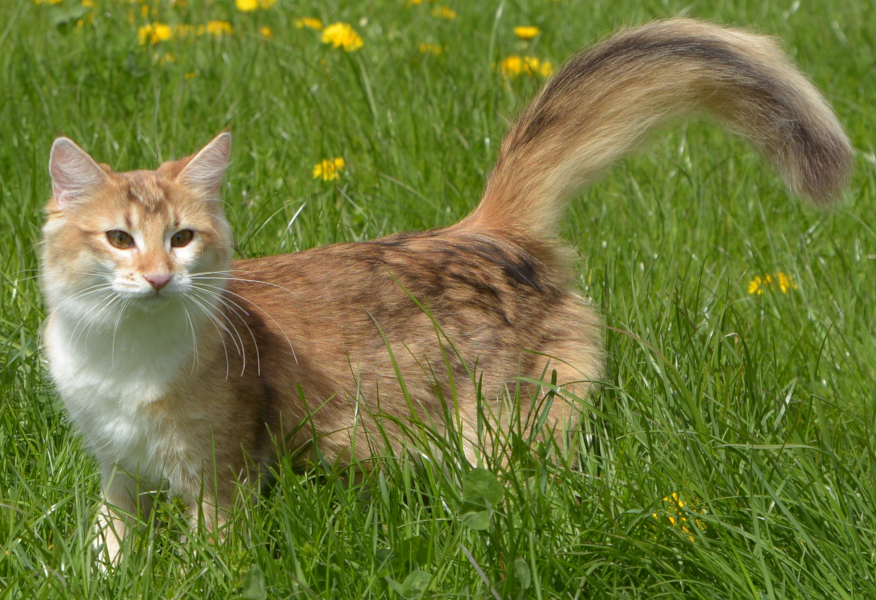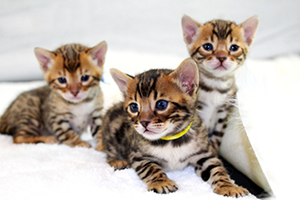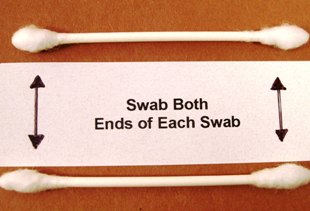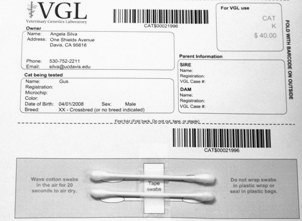Quick Summary

Click here for Price and Turnaround Time
Phenotype: Black pigment in the coat is gradually replaced with yellow pigment, leading to a golden coat coloration in adult cats.
(Note: Display of the full amber coloration depends on the presence/absence of another gene called dominant Orange. In the absence of Orange, males and females with genotype e/e will have the full amber coloration. Amber males that have one copy of Orange will be red. Amber females that have one copy of Orange will be amber/red tortoiseshell. Amber females with two copies of Orange will be red.)
Mode of Inheritance: Autosomal recessive
Alleles: E = Normal (non-Amber), e = Amber
Breeds appropriate for testing: Norwegian Forest Cat
Explanation of Results:
- Cats with E/E genotype will not have amber coloration and cannot transmit this amber coloration variant to their offspring.
- Cats with E/e genotype will not have amber coloration, but are carriers. Matings between two carriers are predicted to produce 25% amber-colored kittens (in the absence of the Orange gene).
- Cats with e/e genotype will have amber coloration in the absence of the Orange gene, and will transmit this amber coloration variant to all of their offspring. If the Orange gene is also present, e/e males with one copy of Orange will display red coats; e/e females with one copy of Orange will display amber/red tortoiseshell coats; and e/e females with two copies of Orange will display red coats.
Cat Coat Color Panel
$57 per animal
Cat Coat Color + White Gloves (Birmans) Panel
$57 per animal
Bengal Coat Color Panel
$57 per animal
Birman Coat Color Panel (Bengal Coat Color + White Gloves)
$57 per animal
Cat DNA tests are carried out using cells brushed from your cat's cheeks and gums using household cotton swabs.
The cat DNA submission form with instructions and a place to tape the cotton swabs is sent to you via email after you place an order, and can be printed from your home computer. DNA test kits are no longer mailed.
Instructions
Step-By-Step:
1.
 Purchase regular household cotton swabs for cat DNA collection (the cotton swabs can be purchased at a pharmacy or drug store)
Purchase regular household cotton swabs for cat DNA collection (the cotton swabs can be purchased at a pharmacy or drug store)
2.

Make sure the cat has not had anything to eat or drink for at least 1 hour prior to collecting sample.
When swabbing kittens, isolate each kitten from the mother, littermates and any shared toys for 1 hour prior to swabbing. Kittens should not have nursed or eaten for 1 hour prior to collecting sample.
If collecting samples from more than one cat, make sure to sample one cat at a time and wash your hands before swabbing another cat.
3.
 Use both ends of the two cotton swabs for a total of four swabs.
Use both ends of the two cotton swabs for a total of four swabs.
4.
Place the cotton head of the swab between the cat’s gums and cheek and rub or rotate the swab back and forth for 15 seconds. Repeat with each cotton swab head, for a total of 4 swabs. We recommend swabbing a different area of the gums with each swab head.
5.
Wave the swab in the air for 10-15 seconds to air dry it before attaching it to the submission form.
6.
 After swabbing the cheek and gums, tape the cotton swabs to the bar-coded submission form printed from your MyVGL account.
After swabbing the cheek and gums, tape the cotton swabs to the bar-coded submission form printed from your MyVGL account.
ATTENTION:
- Do not collect saliva/drool – the key to obtaining a good sample is getting cheek cells on the swab.
- Do not rub swab on the cat’s tongue or teeth – this will result in poor quality sample.
- Do not collect a sample from a kitten that has recently nursed – the mother’s genetic material can rub off on the kitten’s mouth and contaminate the sample.
In cats, shades of red color are determined by the dominant Orange gene located on the X chromosome. However, in some Norwegian Forest Cats, there is a recessive mutation in the melanocortin 1 receptor (MC1R) gene (c.250G>A) that results in kittens that are born with a black/brown (eumalanin) tabby pattern (or blue/apricot in dilute cats). As the kittens mature, the black (or blue) pigment is replaced by yellow (phaeomelanin), resulting in the golden coat coloration seen in adult cats. As the eumelanin is replaced, the tabby pattern may disappear. The Amber mutation traces back to a single female ancestor from Norway born in 1981, and the color, originally named X Colour, is now called Amber.
Amber coloration depends on the presence/absence of the dominant Orange gene. In the absence of Orange, males and females with genotype e/e will have the amber coloration. Amber males that have the Orange gene will be red. Amber females that have one copy of the Orange gene will be amber/red tortoiseshell. Amber females with two copies of the Orange gene will be red.
